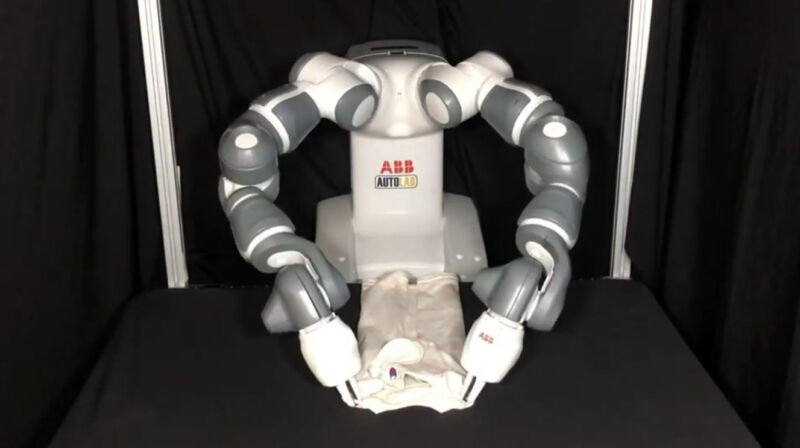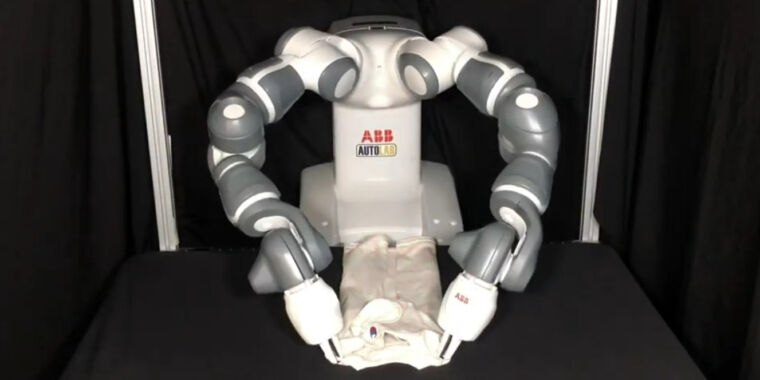
UC Berkeley AUTOLAB
While it’s possible that someone out there enjoys folding clothes, it’s probably not a beloved pastime. Accordingly, researchers at UC Berkeley’s AUTOLAB have developed a new robotic method of folding garments at record speed (for a robot) called SpeedFolding.
Using machine vision, a neural network called BiManual Manipulation Network (BiMaMa-Net), and a pair of industrial robot arms, SpeedFolding can fold 30–40 randomly positioned garments per hour, usually finishing each within two minutes.
While that rate does not sound impressive compared to a human, previous robotic garment-folding methods reached only “3-6 FPH” (that’s “folds per hour”) according to the researchers in a paper submitted for presentation at IROS2022 next week in Kyoto. It’s the work of Yahav Avigal, Tamim Asfour, Torsten Kröger, and Ken Goldberg of UC Berkeley and Lars Berscheid of Karlsruhe Institute of Technology.
Speed achievement aside, the paper is worth a read to enjoy how the researchers describe the garment-folding problem in technical terms. “Folding garments reliably and efficiently is a long-standing challenge in robotic manipulation,” they write, due to “complex dynamics” and the “high dimensional configuration space of garments.” In other words, clothes wrinkle up easily, and they can be all over the place. In response, they’ve come up with a “bimanual system” (using two hands) that can smooth out a crumpled garment, then fold it along preferred folding lines given by the researchers.
An example of an industrial robot using the SpeedFolding technique.
Previous robotic garment-folding methods have “mainly focused on single-arm manipulation,” according to the authors, which might account for the dramatic two-handed speed increase of SpeedFolding.
The BiMaMa-Net neural network learned its ability to fold clothing after studying 4,300 human and machine-assisted examples, and the associated industrial robot can fold clothes from a random initial position in under 120 seconds (on average) with a success rate of 93 percent. Additionally, SpeedFolding can generalize (apply what it has learned) to clothes of a different material, shape, or color than the clothes it trained with.
Basically, the system needs to examine the initial state of the garment (using an overhead camera) and calculate where to grab it with its two arms to get the garment to the next desired step in the folding process.
As far as the robot hardware itself, the researchers used an ABB YuMi industrial robot with gripper fingertips “extended by small 3D printed teeth to improve grasping.” A very similar-looking robot (the YuMI IRB 14000) costs $58,000, so dreams of running SpeedFolding at home are not currently within the reach of a typical household. But the technique might eventually filter down to household robotics.
For now, the paper’s authors mention “textile manufacturing and logistics, industrial and household laundry, healthcare, and hospitality” as potential applications for the technology. For people who don’t enjoy folding and sorting clothes, it’s likely that this aspect of our potential future can’t get here soon enough.








